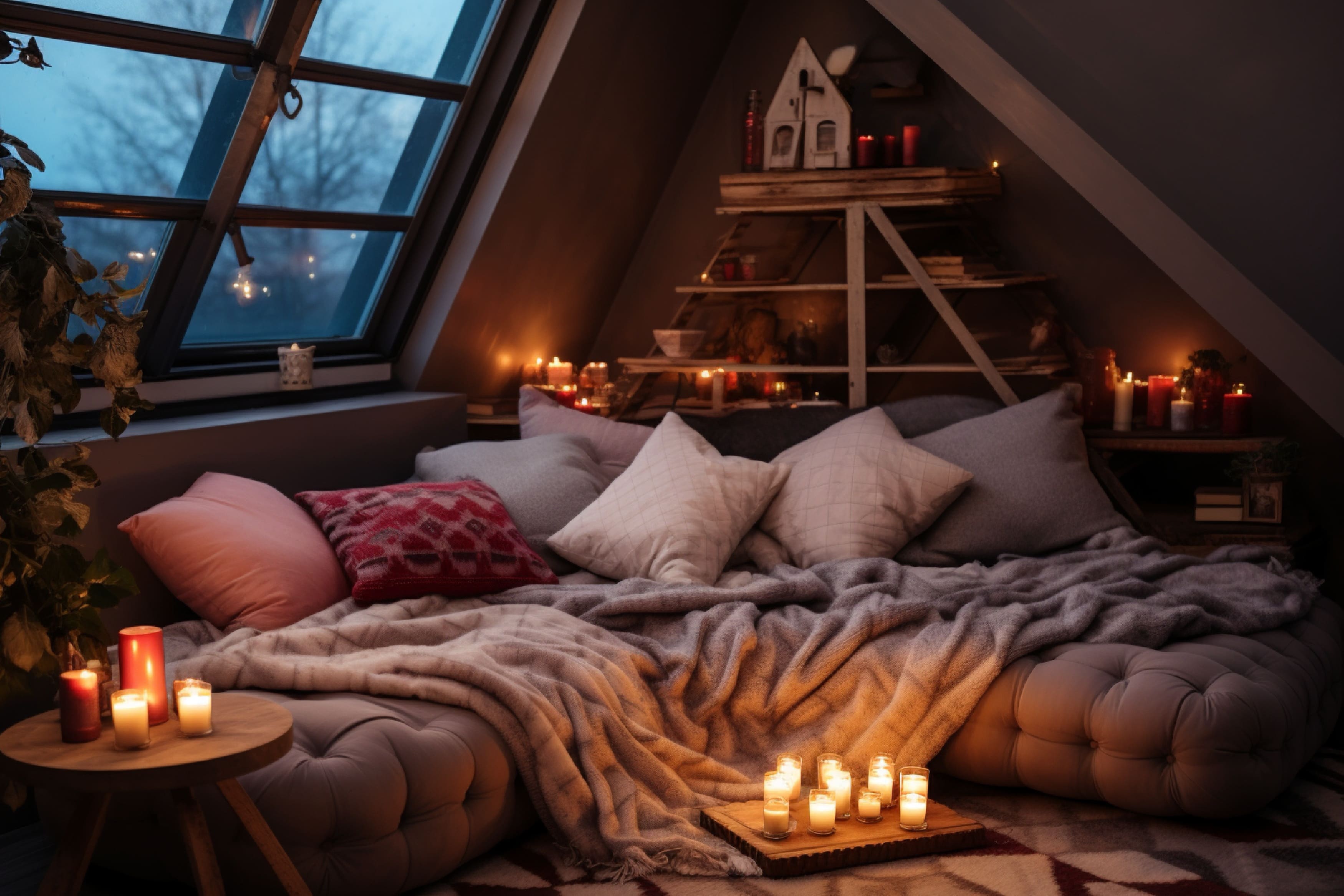In a world often consumed by perfection, the wabi-sabi design style offers a refreshing departure. Originating from Japanese aesthetics, wabi-sabi celebrates the beauty found in imperfection, impermanence, and the authenticity of natural materials.
Where and how did this design style start?
Wabi-sabi as a concept and aesthetic philosophy has roots in ancient Japanese culture and likely emerged in the 15th century. It originated within the tea ceremony culture, particularly influenced by tea master Sen no Rikyū. The term “wabi” originally referred to the loneliness and simplicity of living in nature, while “sabi” was associated with the beauty that comes with the passage of time.
Wabi-sabi’s development was intricately tied to the tea ceremony, which emphasized humility, simplicity, and an appreciation for the imperfect. Over time, the philosophy expanded beyond the tea ceremony to influence various aspects of Japanese art, design, and culture. Today, wabi-sabi continues to inspire a global audience, resonating with those seeking a mindful and authentic approach to aesthetics and living.
Bring a sense of tranquil simplicity into your Designs with our top 5 tips for implementing the wabi-sabi style.
1. Embrace Imperfection:
Central to wabi-sabi is an appreciation for the imperfect and the handmade. Embrace the beauty of asymmetry, irregularities, and the unique character of handcrafted items. Allow imperfections to tell a story and add a layer of authenticity to your living space.
Opt for a natural color palette inspired by earthy tones such as muted greens, browns, and soft grays. Embrace the colors found in nature to create a serene and grounded atmosphere.
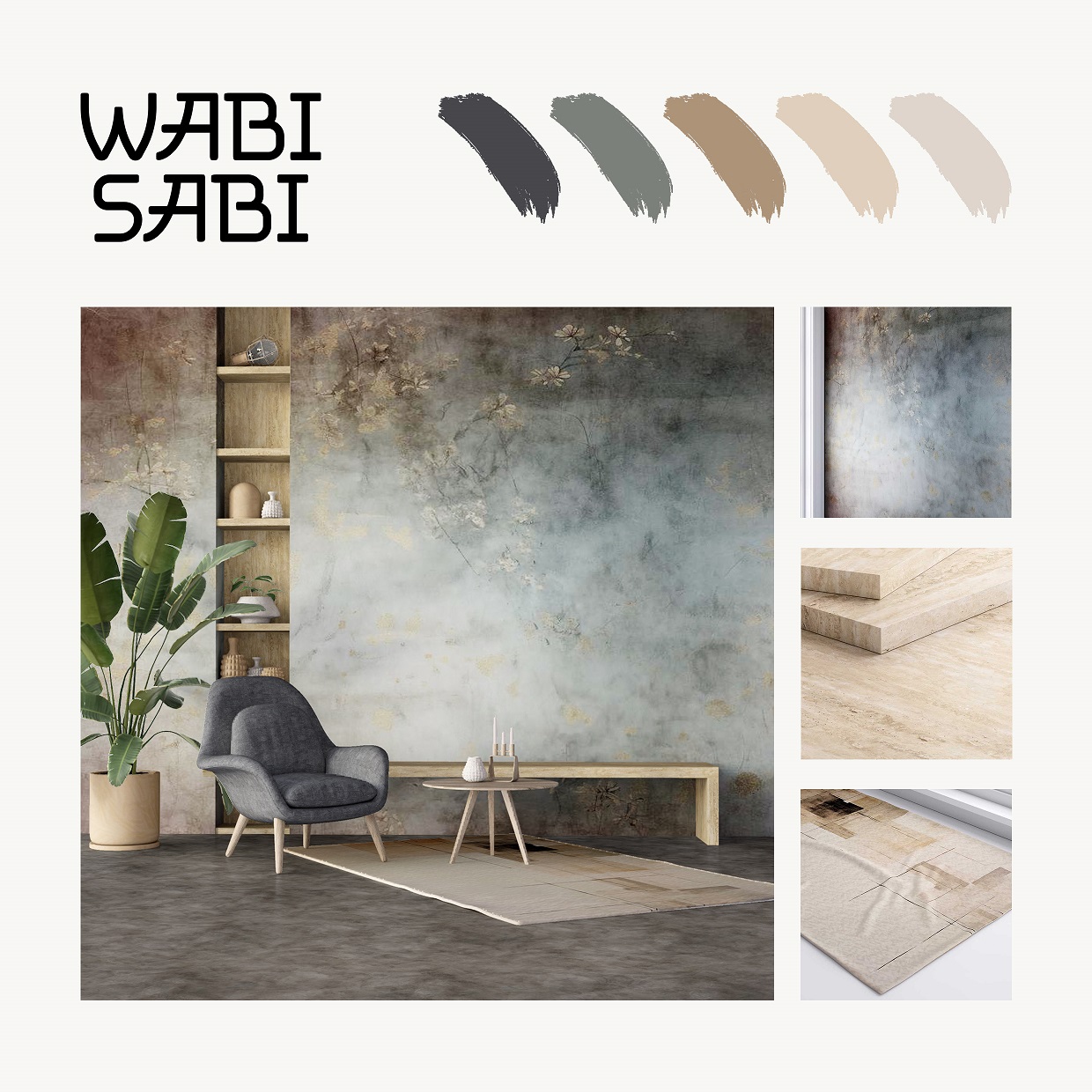
In this Design, the Redecor artists have teamed up to create something truly special. While the colors in this picture lean towards a nature-inspired palette, there is nothing ordinary at all about this scene. The effect of the statement wall and the unique shelving and wooden touches tell a story of beauty in all its irregular forms. Love it!
2. Natural Materials and Textures:
Infuse your home with the warmth of natural materials. Choose furniture and decor made from wood, stone, and other organic elements. Wabi-sabi celebrates the textures of these materials and encourages a connection with the natural world. Opt for unfinished or weathered surfaces to enhance the sense of authenticity.
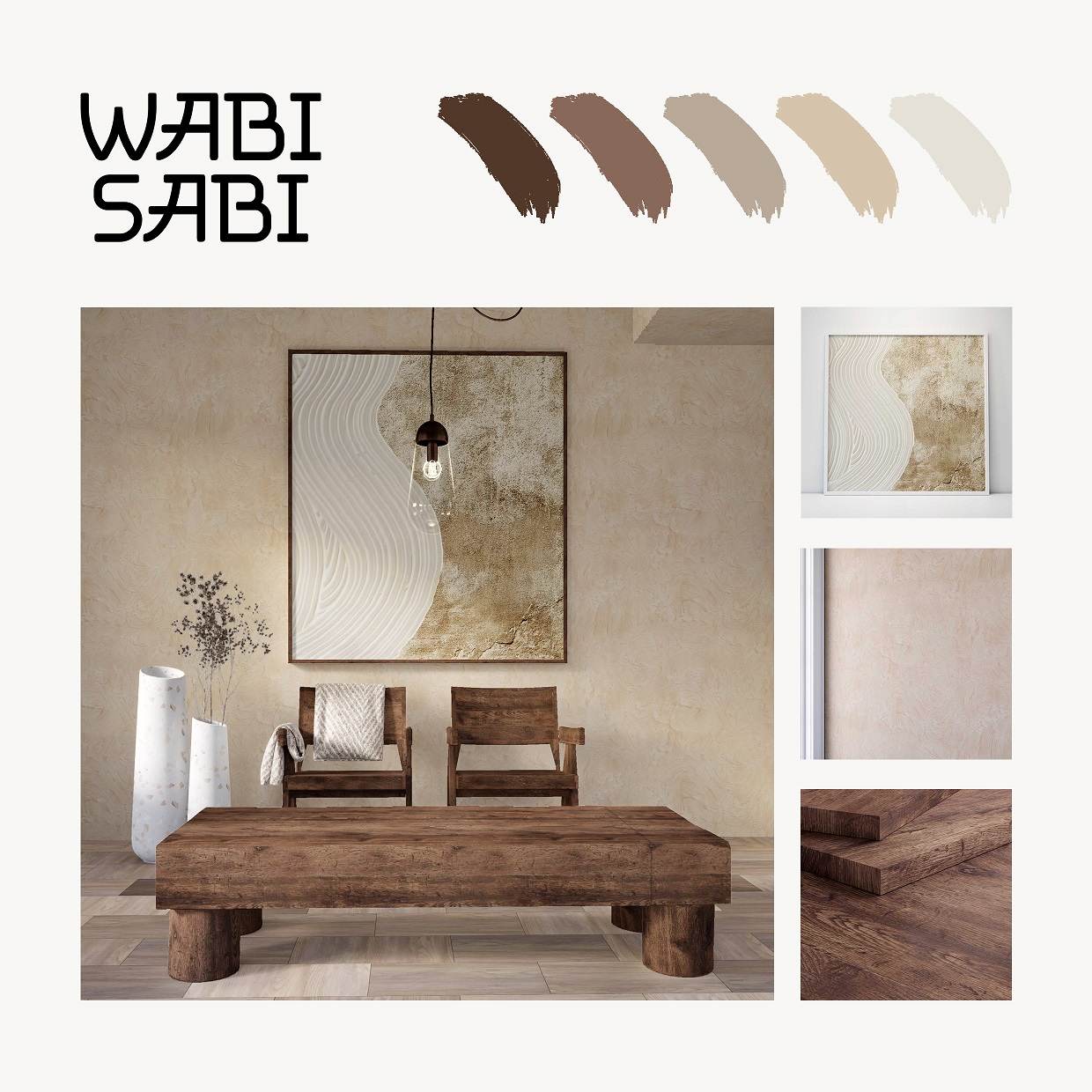
In this scene, you can see how the textured wall adds to the authenticity of the entire Design, the deep wooden tones play a major role in the depth given to this room. Of course, the wall art ties in perfectly with the rest of the elements, both in texture and in color. Absolutely gorgeous!
3. Simplicity in Design:
Simplify your living space by decluttering and focusing on essential elements. Wabi-sabi design encourages a minimalist approach, allowing each piece to stand out and be appreciated. Integrate handcrafted elements such as pottery, ceramics, and woven textiles. These items carry the mark of the artisan’s touch, celebrating the beauty of craftsmanship and uniqueness.
Consider functional pieces that serve a purpose while contributing to the overall aesthetic of simplicity.
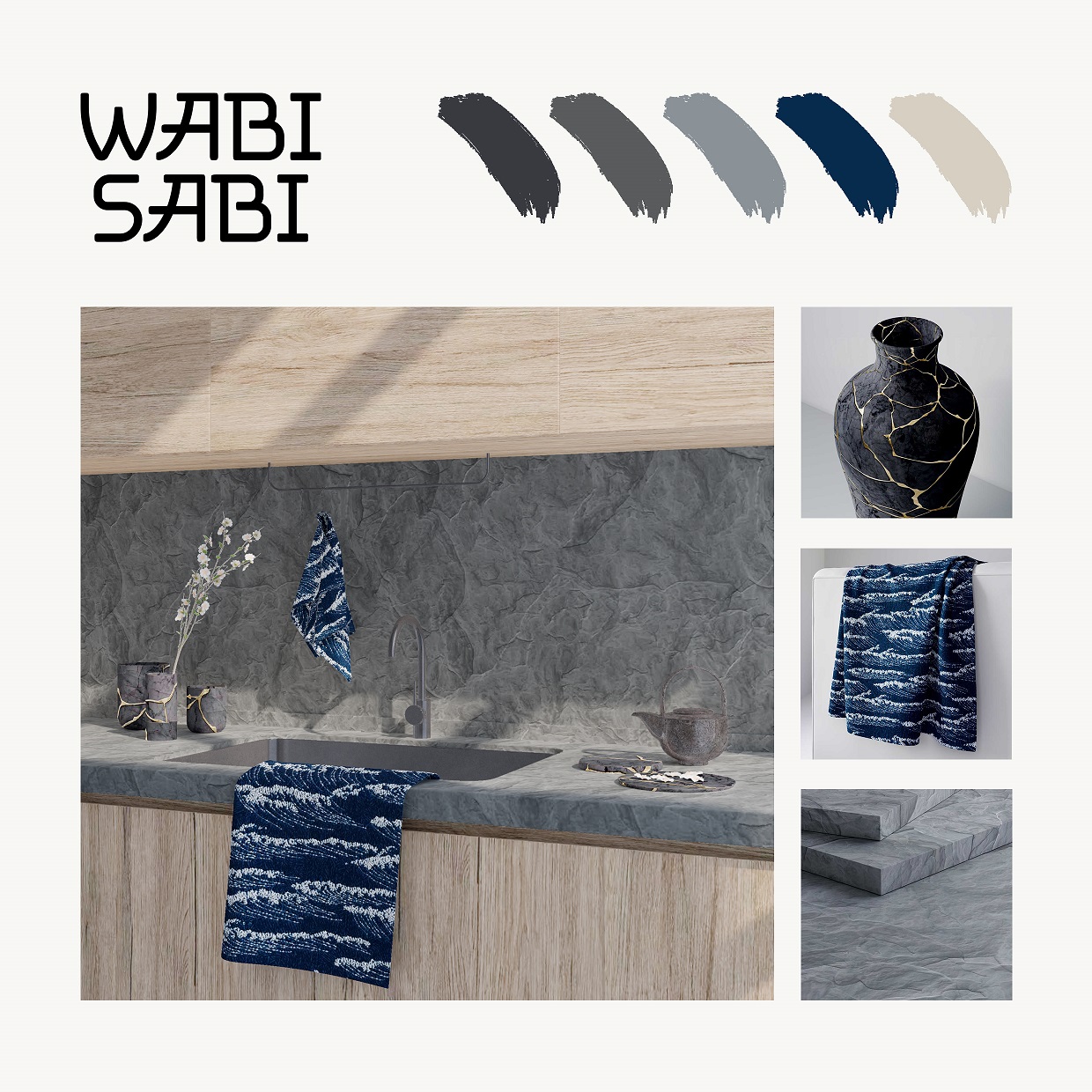
Every homeowner knows – counter space is priceless. That’s why the items chosen here are so carefully picked out. The clean lines of the wooden shelving don’t clash with the rock backsplash – rather, they complement it. The beautiful towel is a fun little nod to the incredible Japanese masterpiece that has become a pop culture reference. The vase is another reference to the Japanese custom of repairing broken ceramics with intricate gold patterns, highlighting the beauty in what is supposedly broken. How do you feel about this kitchen? We’re already rolling our sleeves up to do the dishes in this beautiful setting!
4. Appreciate the Patina of Time:
Wabi-sabi acknowledges the beauty that comes with age and use. Choose items that age gracefully or those that already have slight wear and tear, such as distressed wood, telling a unique story. Vintage or antique pieces often align well with the wabi-sabi philosophy, adding a sense of history and character to your home.
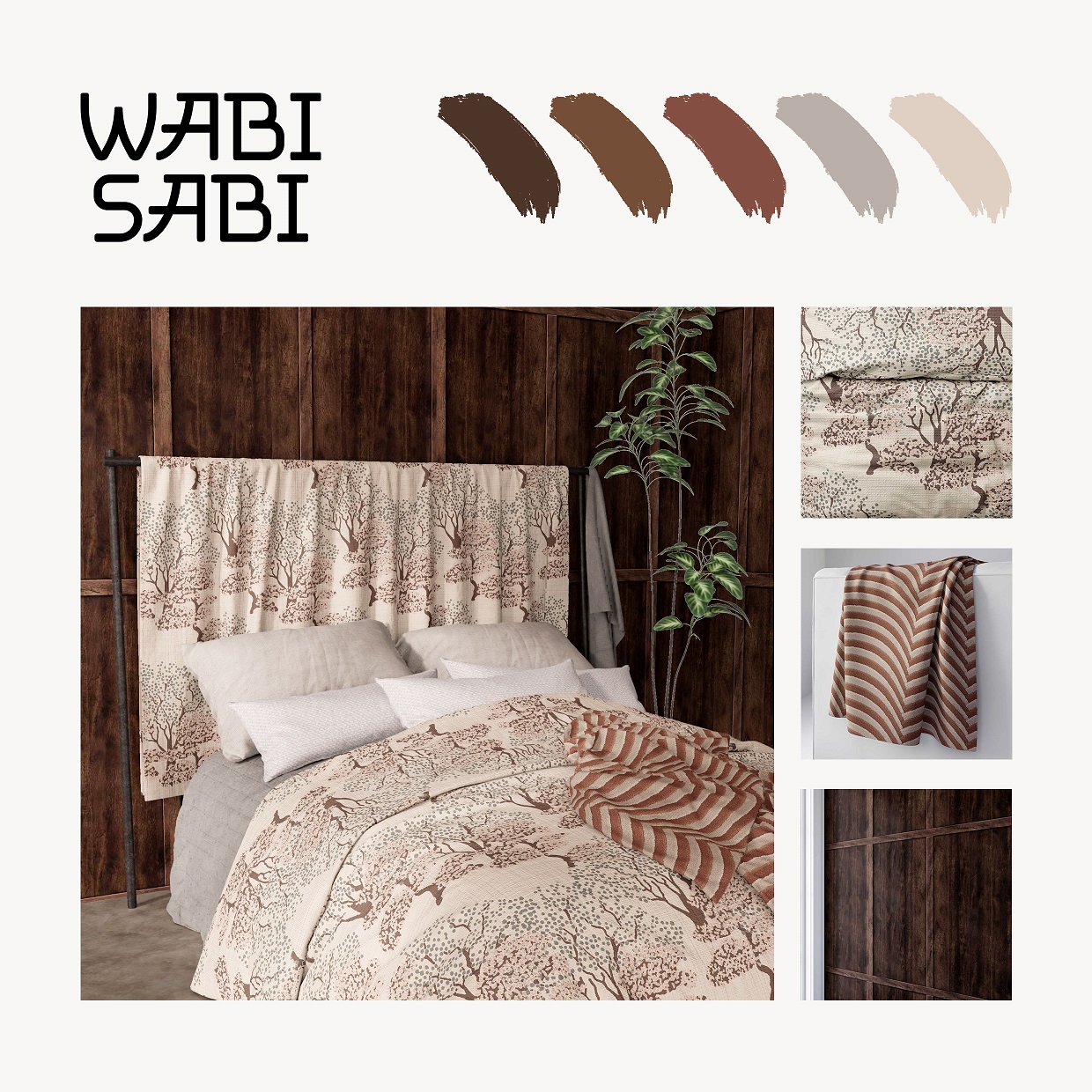
This gorgeous wood chosen for the background adds so much character and depth to this bedroom. Immediately, it sets the tone for the entire room. The print and colors on the beddings work well while contrasting the darker background. The fact that the wooden tones aren’t exactly the same through every board, almost aged, is what gives this wood so much grace and beauty.
5. Connect with Nature:
Bring the outdoors in by incorporating elements inspired by nature. Introduce potted plants, botanical prints, or natural fibers to create a sense of harmony. Wabi-sabi encourages a close connection with the natural world, fostering a calming and balanced atmosphere within your living space.
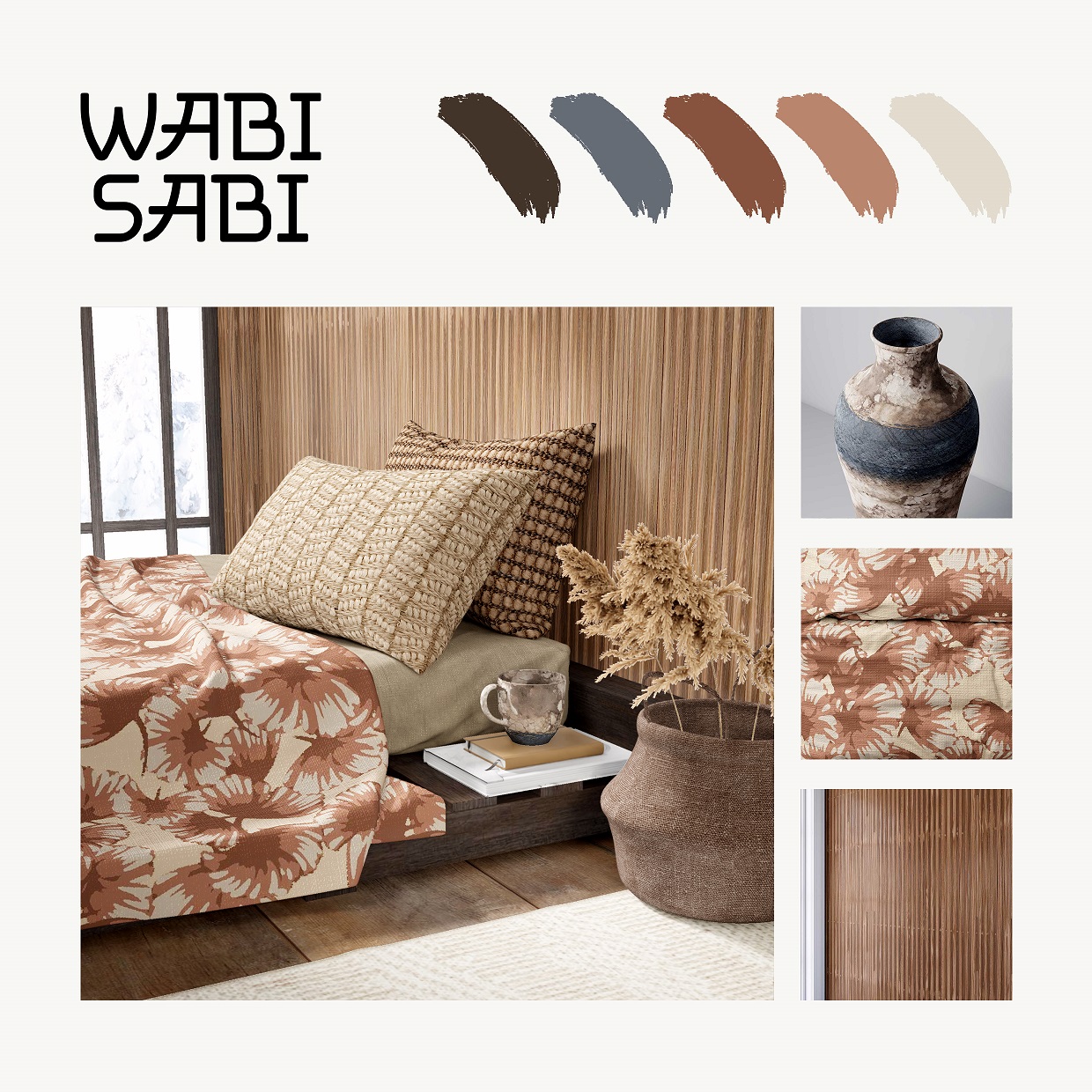
Did someone say botanical prints?! The print on this bedding is absolutely incredible! We are officially in love. The teak-like wood in the background is the perfect accent wall, setting the mood for a nature-filled design. The natural fibers added through the dried plants add warmth and coziness to the Design. And the beautiful ceramics on that mug?! We want one! Love this scene.
You can also learn more about this fascinating design style through our very own Redecor Podcast! Check it out.
As you embark on your journey to embrace the wabi-sabi style, remember that perfection is not the goal. Instead, focus on the beauty of imperfection, the authenticity of natural materials, and the simplicity that comes with embracing a wabi-sabi aesthetic. By incorporating these tips, you can create a home that not only looks beautiful but also radiates a sense of tranquility and timeless elegance.













